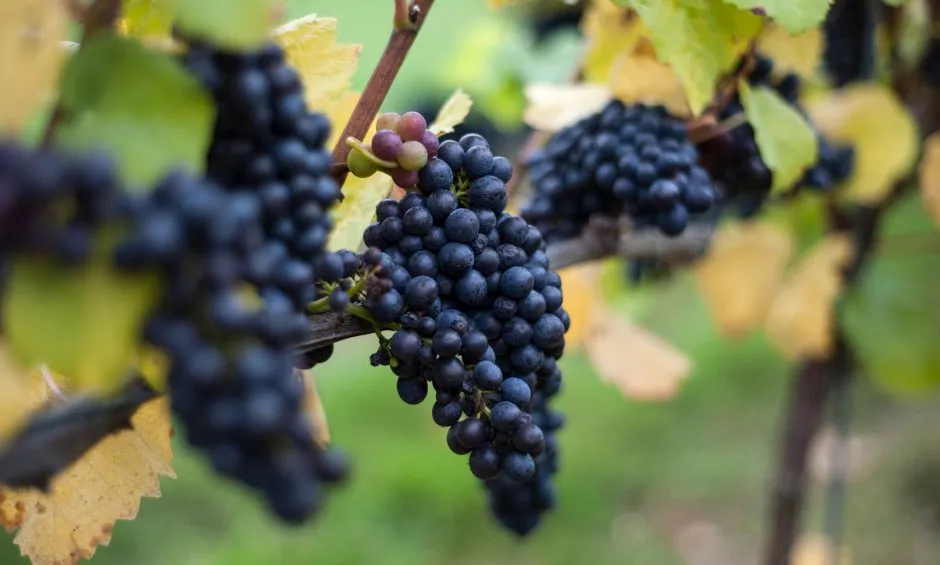Don’t take that chilled glass of wine on a warm day for granted. Hotter temperatures could be threatening the grape.
Multiple studies suggest many of the world’s regions that are suitable for planting wine grapes could be lost to climate change.However, new research indicates that swapping out the traditional fruits for more drought- and heat-tolerant varieties can offer a way forward for winemakers.
Senior author Elizabeth Wolkovich, a professor of forest and conservation sciences at the University of British Columbia, said: “Substituting Grenache or Cabernet Sauvignon for Pinot Noir, planting Trebbiano where Riesling is grown – these aren’t painless shifts to make, but they can ease winegrowers’ transition to a new and warmer world.”
Combining long-term records with global data, the researchers suggest that if temperatures rise by 2°C, the regions of the world that are suitable for growing wine grapes could shrink by as much as 56 per cent. And with 4°C of warming, 85 per cent of those lands would no longer be able to produce good wines, researchers say.
Read more about climate change:
- Ozone-destroying chemicals also warmed the Earth
- Clam shell study issues dire warning over Arctic sea ice melt
Prof Wolkovic added: “These estimates, however, ignore important changes that growers can make. We found that by switching to different varieties, vintners can lessen the damage, to just 24 per cent of areas lost.”
The researchers focused on 11 varieties of wine grape, based on their diversity in development timing, a key trait for climate adaptation.They selected cabernet sauvignon, chasselas, chardonnay, grenache, merlot, monastrell (also known as mourvedre), pinot noir, riesling, sauvignon blanc, syrah and ugni blanc.
Using vintner archives, they built a model for when each would bud, flower, and ripen in winegrowing regions around the world under three different warming scenarios: 0, 2, and 4 degrees of warming. Then, they used climate change projections to see where those varieties would be viable in the future.

Losses were unavoidable in both warming scenarios, due to shifting temperatures and seasonal changes that would affect conditions while the varieties were ripening.However, the scientists discovered that by switching the varieties around “you can reduce losses by a significant amount”.
They suggest, that for example in France’s Burgundy region, heat-loving mourvedre and grenache could replace current varieties such as pinot noir.In Bordeaux, cabernet sauvignon and merlot could be replaced with mourvedre.
According to the study, cooler wine-growing regions such as Germany, New Zealand and the US Pacific Northwest would be relatively unscathed in the 2°C scenario.Published in the Proceedings of the National Academy of Sciences, it sets out these areas could become suitable for warmer varieties like merlot and grenache, while varieties that prefer cooler temperatures, such as pinot noir, could expand northward.
Read more about wine:
- On a desert island, would it be better to drink wine or go thirsty?
- A scientist’s guide to life: how to survive a hangover
However, the researchers acknowledge there are legal and cultural hurdles in shuffling grape varieties around.
Prof Wolkovich said: “The effectiveness of any strategy depends on both the grape growers and people in general. Consumers who are willing to try new varieties can play a big part in helping save the regions people love. Legislation can encourage growers to test out new varieties. And ultimately, people can make the largest impact through work to reduce emissions globally.”
Researchers say that regions which are already limited to planting the warmest varieties – such as Italy, Spain, and Australia – face the largest losses.They also found that variety-swapping was less effective at higher amounts of global warming.With 4°C of warming, planting climate-specific varieties reduced losses from 85 per cent to 58 per cent.
The researchers note that management practices like increased irrigation and using shade cloths can also help to protect grapevines, but only at lower levels of warming.
Reader Q&A: Is the saying ‘beer before wine, you’ll feel fine’ true?
According to this saying, the order that you consume your alcoholic drinks matters (the complete phrase is: ‘beer before wine and you’ll feel fine; wine before beer and you’ll feel queer’). But every hangover has the same culprit: alcohol.
Alcohol is thought to cause hangovers in two main ways. First, it diverts water from your bloodstream to your bladder. Over the course of a night out, you’ll lose more fluid than you drink, often resulting in a dehydration headache the next day.
Second, a chemical called acetaldehyde is one of the intermediate products of alcohol digestion in the liver. This is even more toxic than alcohol itself, so you feel rough until it has been metabolised into safer compounds.
The total amount of alcohol you drink will have a much bigger effect on how you feel than the specific order of drinks. A 2019 study at Cambridge University found that volunteers given two and a half pints of beer, followed by four large glasses of wine, reported just as bad a hangover as those who had the wine first and then the beer.
If there’s any truth to this saying, it may be that the parties where you start on wine are more likely to get out of hand – perhaps because you get drunk faster on the stronger booze and find it harder to keep track of how many you’ve had.
Read more: